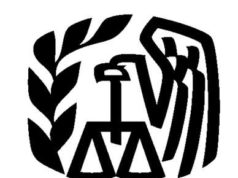
Individual
retirement accounts, or IRAs, are retirement plans that allow people to save
money for the future after retiring from the workforce. These plans, depending
on the type, allow money to be deposited by either the account holder or their
employer each year up until the account holder decides to retire.
The Employee
Retirement Income Security Act of 1974 (ERISA) allowed for the creation of the
IRA by amending the Internal Revenue Code. Under ERISA, an employee could
initially set aside up to $1,500 each year towards retirement. But as new
legislation came about, that allowed for more money to be placed in an IRA.
The types of individual retirement accounts that can be
created are IRAs (traditional IRAs), Roth IRAs, SEP IRAs, and SIMPLE IRAs. These
plans operate in a slightly different manner from each other but follow the
same principle in that they are intended to help the account holder effectively
plan for their retirement.
Basic Information
Individual retirement accounts, or
traditional IRAs, were first available to citizens of the United States in
1975. They were intended to be used for workers in a higher tax bracket in
order to help them save for retirement. As they are now, almost anyone can
establish an IRA through an employer that offers it or directly through a
financial institution.
A financial institution, such as a bank or brokerage
firm, is involved with the IRA through either method. This allows for funds to
be invested in a certificate of deposit or in a mutual fund while still growing
through the contributions of the the account holder.
holder, loans and withdrawals made before retirement are penalized by the
Internal Revenue Service. The related penalties and taxes that affect an IRA
are listed in the Internal Revenue Code. However, the funds placed in a
traditional IRA are not taxable by income taxes as they are deposited on a
pre-tax basis.
Provisions
The Internal Revenue Code, as administered by
the Internal Revenue Service (IRS), outlines provisions, restrictions,
limitations and penalties to be applied to IRAs. These provisions often apply
to the contributions made to the IRA, withdrawals from the IRA, and the taxes
that can affect the IRA
These provisions have been made through legislation
that amended the Internal Revenue Code such as the Employee Retirement Income
Security Act of 1974 (ERISA), the Tax Reform Act of 1986 (TRA), the Economic
Growth and Tax Relief Reconciliation Act of 2001 (EGTRRA), the and the Pension
Protect Act of 2006 (PPA).
The most common provisions set by the IRS in regard to IRAs
are based on age, contributions made to the retirement account, withdrawals
from the retirement account, and any penalties or taxes under the Internal
Revenue Code.
Roth IRAs
A Roth IRA, named after the late Senator
William Roth, is modified form of an IRA. This retirement plan allows the
account holder to place funds in the fund just as with a traditional IRA.
However, the contributions made to a Roth IRA are not tax deductible as with a
traditional IRA. Conversely, distributions, or withdrawals, made from a Roth
IRA are generally free from additional taxes or penalties. This is because the
funds in a Roth IRA are still listed under the income of the account holder.
One major requirement of having a Roth IRA is
that it must “season” for a minimum of 5 years. “Seasoning”
means that the account has been allowed to grow and mature through
contributions and investments made to the retirement plan.
After this period,
the IRA can then be distributed or transferred depending on the wishes of the
account holder. Roth IRAs also allow the account holder to transfer the funds
to a specific beneficiary under certain circumstances or purchase a home with a
portion of the contributions of the IRA.
A Roth 401(k) plan, made available in 2006, combines the
benefits of a Roth IRA and a 401(k) plan.
SEP IRAs
An SEP IRA, or Simplified Employee Pension
IRA, is a retirement fund that is created through a traditional IRA and facilitated
by an employer. The employer can only offer this type of retirement plan so
long as it does not offer any other retirement plans.
Employers can also make
contributions to the SEP IRAs of its employees. Although this helps the growth
of the retirement account, there are restrictions to the amount of
contributions an employer can make.
As an SEP IRA is created through a traditional IRA, the only
difference between the accounts are certain restrictions and the label placed
on the IRA. There are also additional eligibility requirements placed on the
account holder based on age, income and length of employment with that
particular employer.
SIMPLE IRAs
A SIMPLE IRA, or Savings Incentive Match Plan
for Employees IRA, is a retirement fund that is also facilitated through an
employer. However, with this plan, the employer is required to make
contributions annually to the retirement plan even if an employee does not.
This provides an incentive for the employee to contribute to his or her
retirement and save money for the future.
employer and the employee. The employer can only offer this type of retirement
fund in a benefits package given to all employees, there is a limit to how many
employees the employer can have to offer this IRA, and the IRA must be
established between certain dates. In regard to the employee, there are
additional penalties applied to withdrawals from the account as it has been
created strictly for retirement purposes.
























